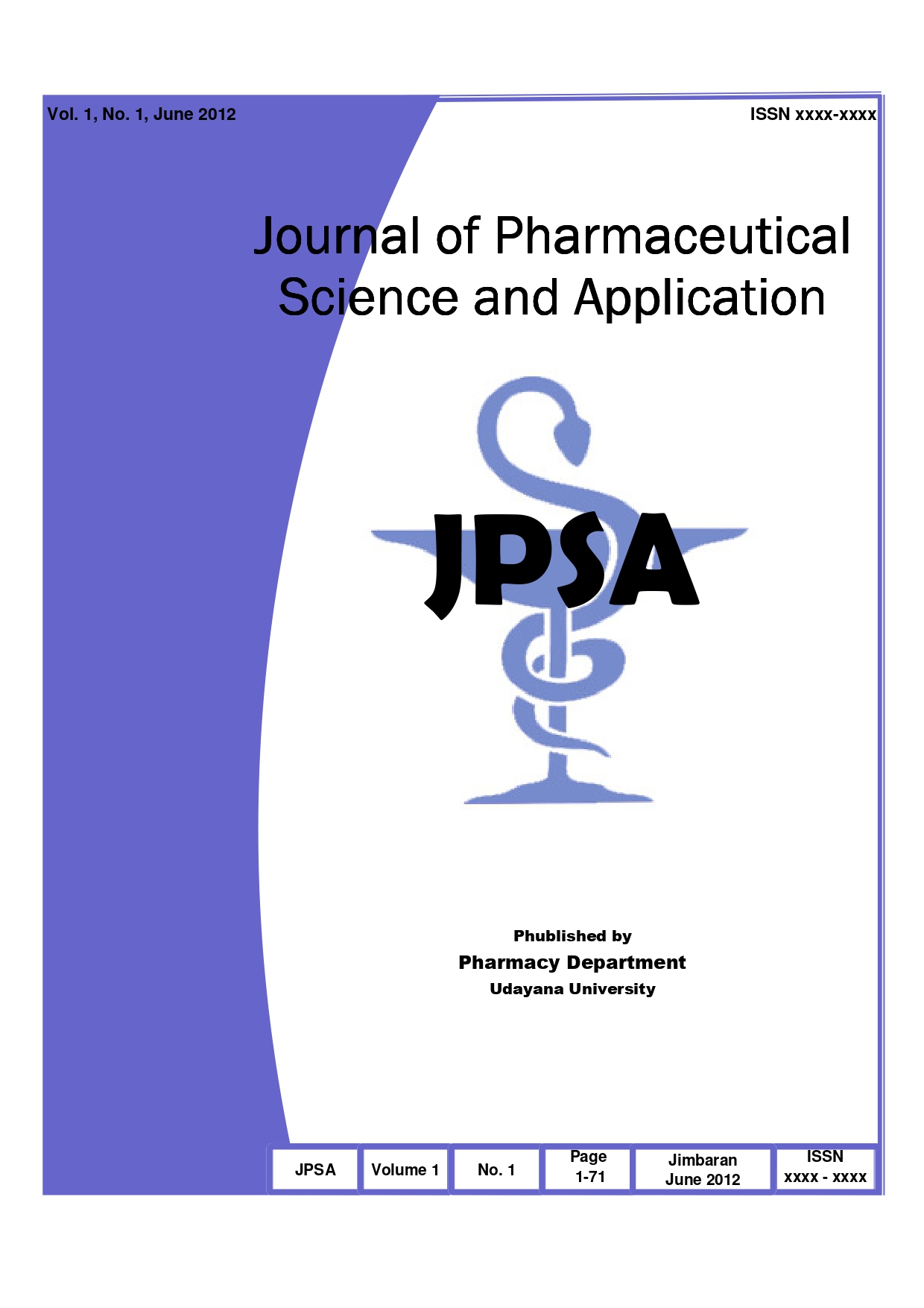Chitosan Reinforced Alginate Microcapsules Retained The Release of Papain in Simulated Gastric Fluid
Abstract
Alginate microcapsules were obtained by emulsification/internal gelation technique was chosen as carrier papain and the potential use as an oral controlled release system investigated. Chitosan was then applied as a membrane coat to increase the mechanical and stabilize the microcapsules in simulated gastric fluid. Papain microcapsules consisted of particle size distribution, morphology, entrapment efficiency of papain in the microspheres and release study. The release study was performed in various pHs with or without proteolitic enzyme. Narrow particle size distribution with average of 315-560 ?m was obtained from microcapsule prepared with water/oil ratio of 30 : 70, acid/CaCO3 molar ratio of 6 : 1 and agitation speed of 400 rpm. Papain microcapsule with that composition has entrapment efficiency of 95.79%. The release of papain from the alginate-chitosan microcapsule took place trough diffusion and relaxation of polymer at pH 1.2-4.5. The in vitro release studies showed that alginate-chitosan complex formation reduce erosion of alginate-chitosan matrix at pH 6.8. Both pepsin and pankreatin increased release of papain. Alginate-chitosan polyelectrolyte complex occurred on the surface of papain microcapsule controlled the release of papain from microcapsule. The presence of chitosan on the surface of microcapsule retained the release of papain in undesired site (gastric). In conclusion, papain microcapsule developed in this study is suggested to be appropriate approach for oral delivery of papain.
Keywords : papain, microcapsules, alginate, chitosan, pepsin, pankreatin
Downloads
Authors who publish with this journal agree to the following terms:
Authors retain copyright and grant the journal right of first publication with the work simultaneously licensed under a Creative Commons Attribution License that allows others to share the work with an acknowledgment of the work's authorship and initial publication in this journal.
Authors are able to enter into separate, additional contractual arrangements for the non-exclusive distribution of the journal's published version of the work (e.g., post it to an institutional repository or publish it in a book), with an acknowledgment of its initial publication in this journal.
Authors are permitted and encouraged to post their work online (e.g., in institutional repositories or on their website) prior to and during the submission process, as it can lead to productive exchanges, as well as earlier and greater citation of published work. (See The Effect of Open Access).

This work is licensed under a Creative Commons Attribution 4.0 International License.


 HOME
HOME














